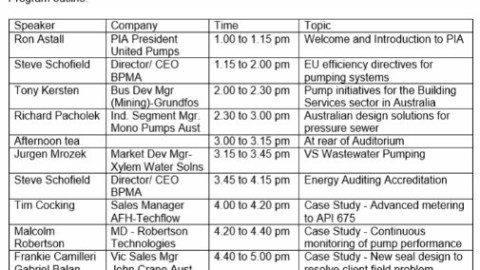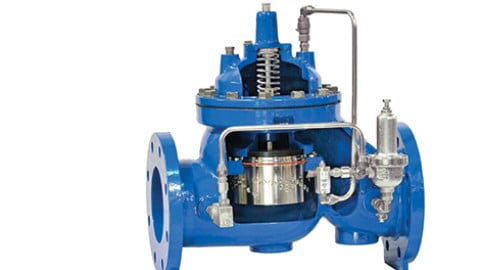By Alastair Foster, Project Manager B.C.E, MBA, Amiad Australia
Membrane technology development and the influx of solution providers over the last 10 years have been the driving forces lowering the cost of making ultrafiltration a viable option for many applications in water treatment.
Without pretreatment, the membrane is susceptible to choking of pores and reduced performance due to particles of varying sizes. Abrasive particles can cause mechanical damage and affect membrane integrity. Organic-fouling is another major factor in the reduction of membrane life and membrane performance. . Benefits associated with selecting the right pre-filtration can contribute significant performance improvements to your ultrafiltration plant.
Algae blooms and Larvae from surface water (river, lake, pond and sea water) can cause significant issues of organic fouling and potential destruction of microfiltration and ultrafiltration membrane systems.
Over the last 3-5 years designers have realised the negative impact that insufficient pretreatment has on operational costs and performance with respect to chemical cleaning CIP, replacement and maintenance. This has led to a rethink on the need for sufficient membrane pretreatment and protection.
Enhanced flux methods have been proven to increase life of the membrane and performance by continuous dosing of chemicals. However determining the need for chemicals should be the last step as additional chemicals are costly and required for further processes of treatment or removal. The first step is to remove large particulates and suspended solids.
What is protecting your membranes?
A common problem all around the world with desalination is the issue of barnacles and crustacean contamination. Barnacle larvae are able to pass through coarse filtration, (200 to 400 micron screens have been proven to be insufficient), and thus populate & flourish downstream. Barnacles settle and establish attachment to surfaces within a 12 hour period. Their hard shells can cause damage to membranes and pumps. Once the barnacles attach they are extremely difficult to remove or eradicate as illustrated in (Figure 1). The barnacle problem can be resolved with pre-filtration degree of 100 micron or finer as illustrated in (Figure 2).
Selecting the type of Pretreatment
Appropriate pre-filtration/treatment shall ensure the integrity, performance and longevity of the downstream membranes, minimizing CIP cycles and chemical use. The typical pre-filtration technologies are Media, Screen, or Disc Filtration.
Amiad has the full range of options (media, self-cleaning screen and discs filtration). Amiad’s engineers tailor solutions to each application depending on water quality, materials of construction, and end users requirements.
The Solution Selected
To select a solution for desalination and coal seam gas sectors with the aim of ensuring protection to the ultrafiltration membranes. The common issues in the feed water, which are applicable to both industries; highly corrosive combined with a high organic loading.
Disc filtration is chosen as it is most suited to these conditions. The polymeric design (being made out of polypropylene) is compatible to corrosive environments removing the risk of corrosion or the need for costly exotic materials and rubber lining. The Amiad-Arkal range of Disc Filtration Batteries have a flexible modular design which allows different configurations to manage a virtually limitless range of flow rates.
How The Technology Works
Amiad -Arkal Filtration Systems uses a specially designed disc filtration technology. Thin, colour coded polypropylene discs are diagonally grooved on both sides to provide a specific micron rating when compressed together. A series of these discs are stacked together and compressed, on a specially designed spine, to form a disc element (Spin Klin® element).
When stacked together the disc grooves on top runs opposite to the disc grooves below, creating a filtration element with a statistically significant series of valleys and traps for suspended solids in the feed stream to be captured.
During the filtration process, the discs are tightly compressed together by a spring’s tension as well as the Hydraulic force (created by the differential pressure). Filtration occurs by the feed water passing from the outer diameter to the inner diameter of the disc element. There are between 18 -32 stopping points depending on the micron rating selected (400-20 micron discs respectively).
Self-Cleaning
By reversing the flow through the spine, water pressure is applied to underside of the piston. This forces the piston upward against the tension of the spring. The pressure that was clamping the discs is reversed allowing a gap in between the discs during the backwashing operation. Internal spray nozzles within the spine jet the inside of the discs forcing them to spin. The spray nozzle flow and spinning action of the discs releases the trapped debris to clean the discs, and this reject stream is directed to the filter drain (via a backwash valve).
- Figure 1 (above) Barnacles formed permeate side of 400µm disc Spin-Klin © spine element of a pre-filter, after 4 months of service
- Figure 2 (above) No Barnacles formed due to 100 micron disc Spin-Klin © spine after 13 months of continuous operation.
- The polymeric design of the filters is critical for plant life expectancy as this system is located in a coastal environment and processing sea water.
Case Study – Desalination
The plant is designed for operating with the total flow rate capacity of 576 MLD sea water.
The recovery is 99% with a filtration degree of 100 micron protecting the ultrafiltration membranes.
Case Study – Coal Seam Gas
Large scale plant in Queensland has been delivered to site and due to be commissioned later this year.
Protection for ultrafiltration membranes from raw ponds water with a flow rate of 48 MLD and with 200 microns for requirement for removal of Algae blooms. The recovery is 99% in this case.




















